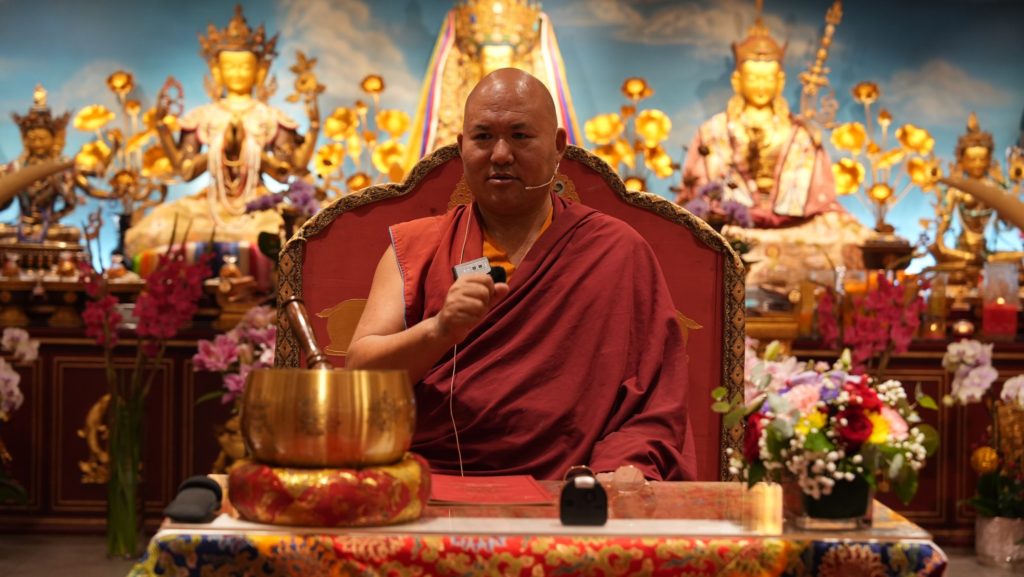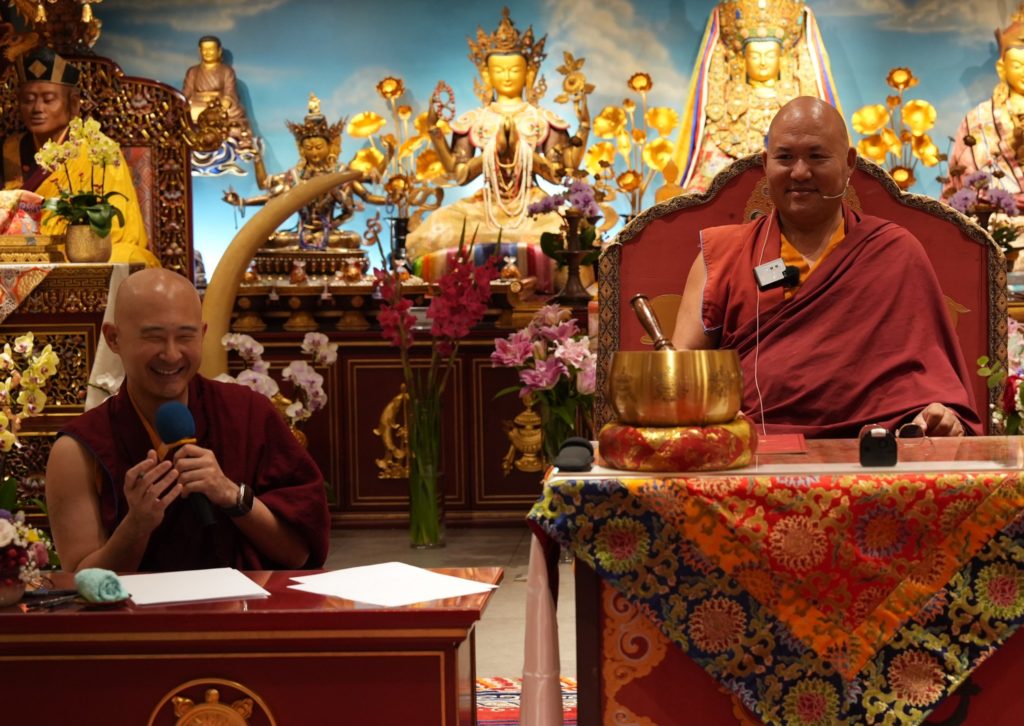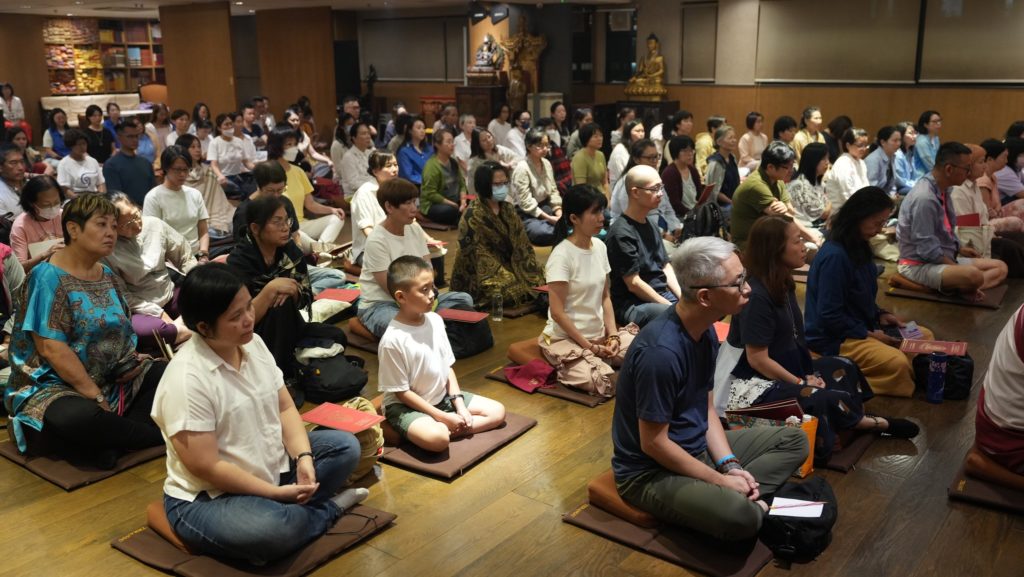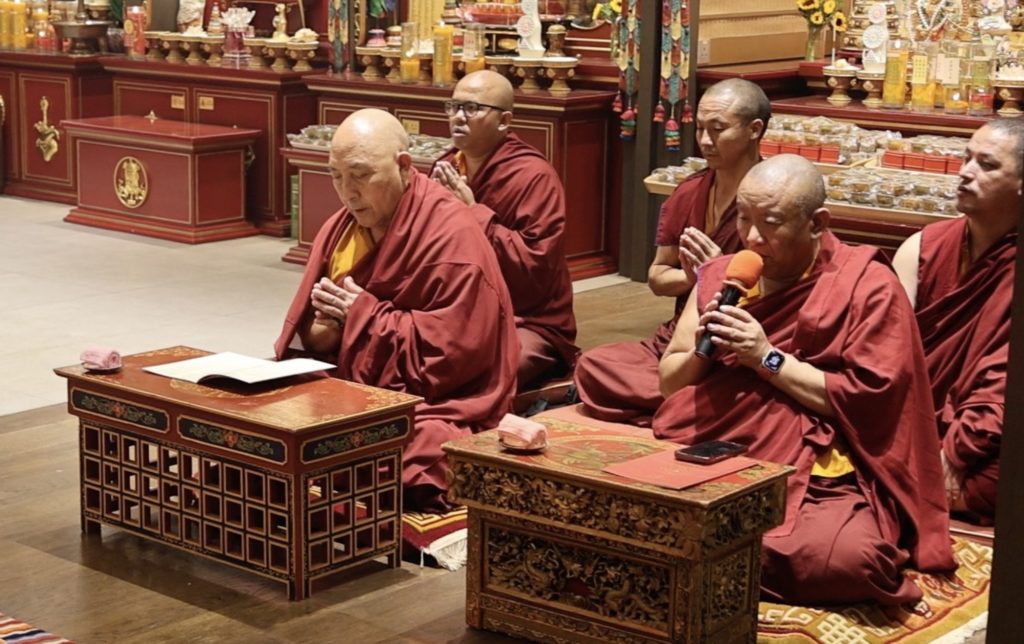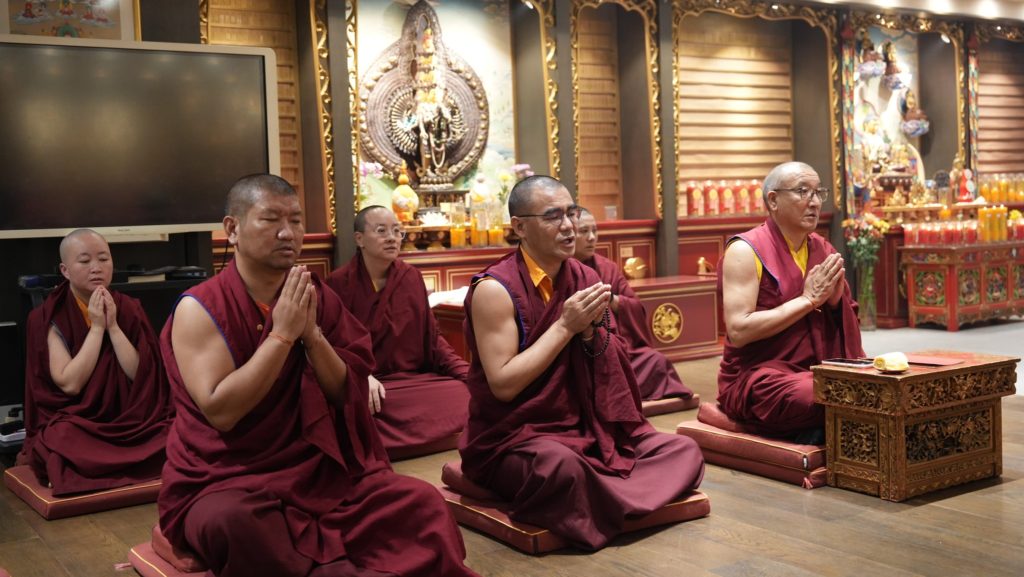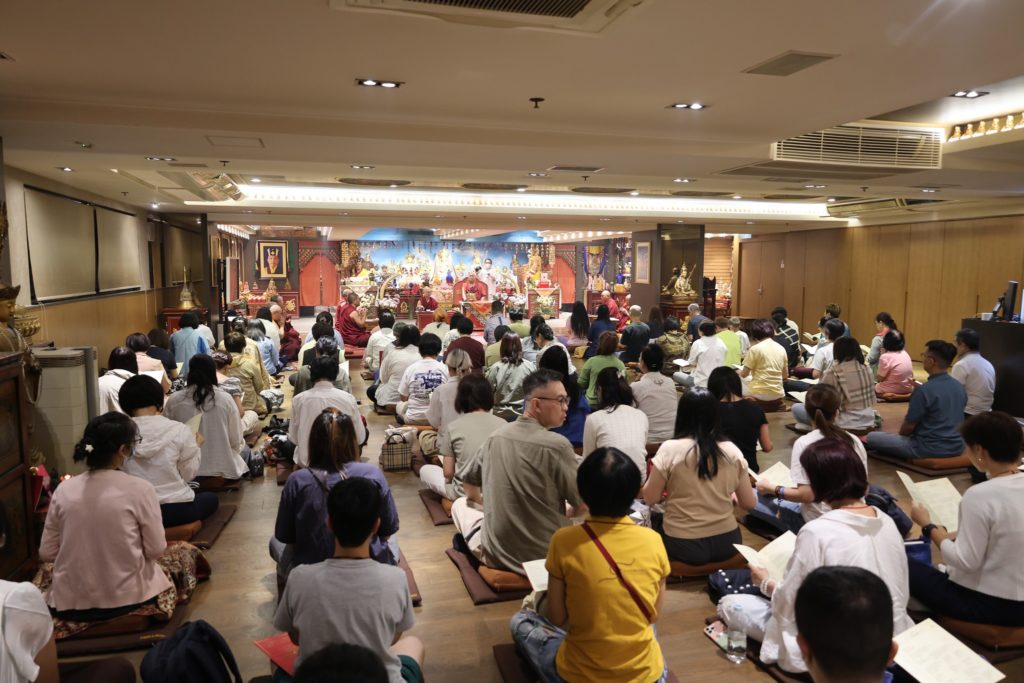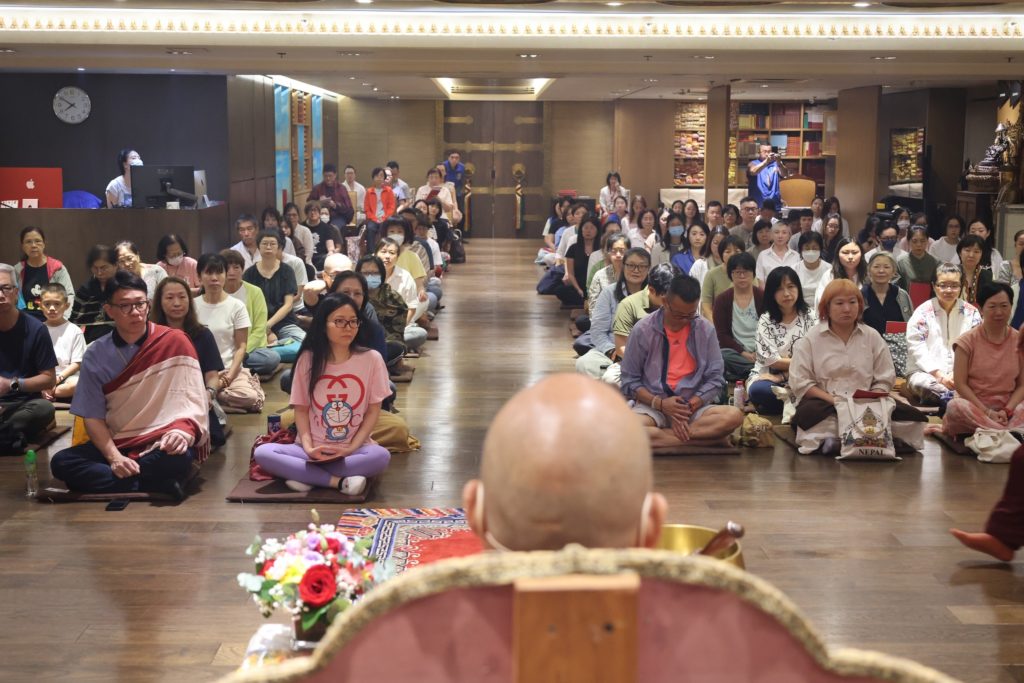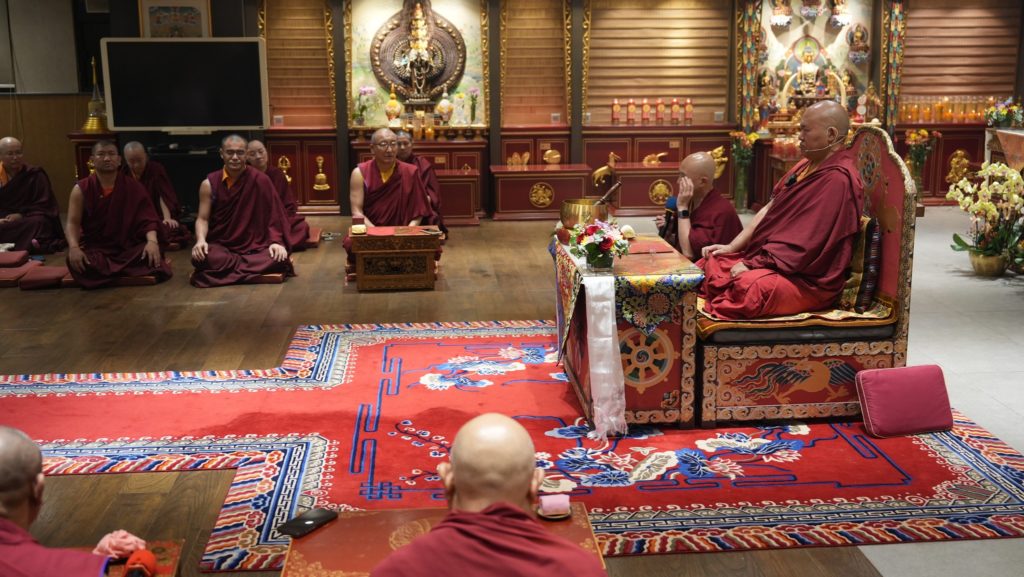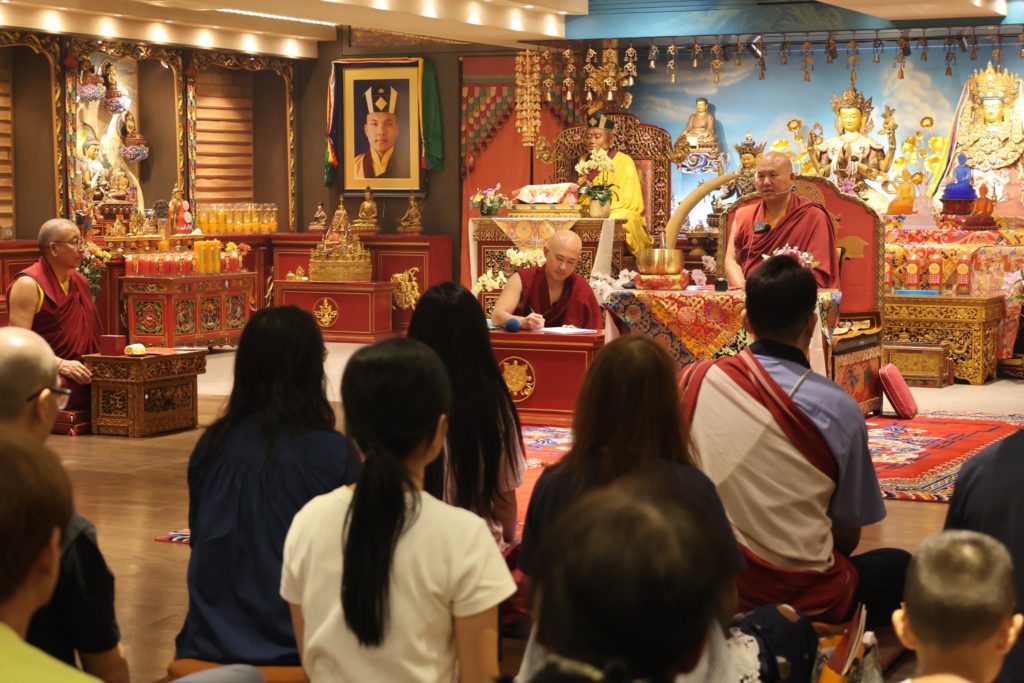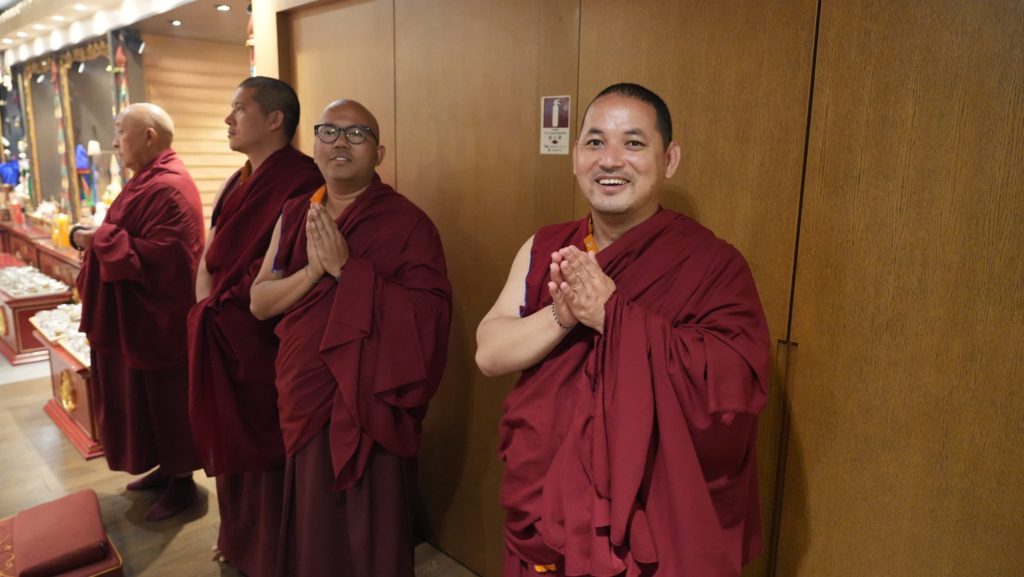The Four Dharmas of Gampopa – Thrangu Vajrayana Buddhist Centre Hong Kong
Today Drupon Khen Rinpoche taught at the Thrangu Vajrayana Buddhist Centre Hong Kong on the Four Thoughts of Gampopa. Khenpo Tengye provided interpretation.
Here are some excerpts of the main points of the teaching:
Introduction:
The Four Dharmas of Gampopa summarise the entire path of Buddhism. Other such pithy summarisations are Parting from the Four Attachments of the Sakyapas and The Three Principle Aspects of the Path of the Gelugpas.
To give a brief introduction to the Four Dharmas of Gampopa:
1. The mind going to the Dharma:
This is the first of the Four Dharmas of Gampopa. Our mind going to the Dharma means we take on the mindset of a Dharma practitioner. We talk about the ways of thinking of Westerners, Chinese people, Tibetan people, etc. So, we start with whatever mentality we currently have based on our upbringing and so forth, and by contemplating the four thoughts that turn our mind to the Dharma we take on the mentality of a Dharma person.
2. Dharma succeeding as a path:
Here, we adopt what will take our path in the Dharma to completion. Arhats, for example, have not taken the path to completion, meaning they have not discarded all that is to be discarded or realised all that is to be realised. They mistakenly think, however, that they have reached the end of the path. What they are missing and what would ensure the successful consummation of the path is the awakening mind, bodhicitta. In particular, at this stage, the relative awakening mind, where we direct our minds away from our well-being alone to the welfare and enlightenment of others.
3. Dispelling delusion regarding the path:
This primarily refers to the ultimate awakening mind, where we contemplate and understand emptiness and how phenomena lack intrinsic reality.
4. Delusion arising as wisdom:
This relates to the secret mantra level of the Dharma. We should note that that the idea of discarding delusion at this point has been transcended. In the lower vehicle practices, delusion and all afflictions are to be discarded, but for practitioners of this level, delusion itself is seen to arise as wisdom. This is a difficult point to understand.
This is a brief introduction to the Four Dharmas of Gampopa. As is always the case with this type of teaching, you may take away a few bits of information regarding what the four Dharmas are, but there is not enough depth or detail that would enable one to practise the four Dharmas. One must receive the teachings on each stage in a systematic fashion under the guidance of a qualified master.
An ideal approach to the Buddhist path is to integrate the study of the treatises and the practice of the instructions. It is difficult to gain a complete picture of reality and progress along the path with just one of these in isolation.
For example, if we were to study the sixth chapter of Entering the Middle Way, we would get an idea of the basic nature of reality, but a beginner would find it difficult to know how to put that understanding into practice. Or, if we were to practise contemplating the difficulty of finding the leisures and opportunities of a precious human life, we might find something to contemplate, but it would not give us a very clear idea of the fundamental nature of reality. If we were to integrate these two, however, that would make for an ideal situation.
